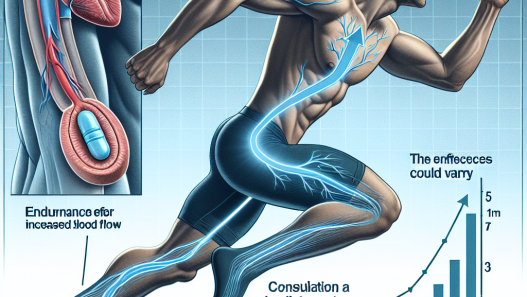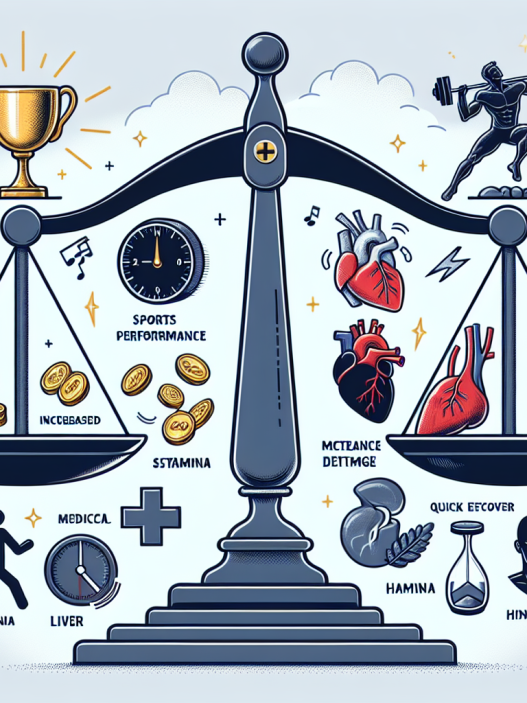-
Table of Contents
Trenbolone: Future Perspectives in Sports Pharmacological Research
Trenbolone, also known as 19-nor-δ9,11-testosterone or simply “tren,” is a synthetic anabolic-androgenic steroid (AAS) that has gained popularity among athletes and bodybuilders for its ability to increase muscle mass and strength. Originally developed for veterinary use, trenbolone has since been banned for human use due to its potential for abuse and adverse effects. However, its use in the sports world continues, and with advancements in pharmacological research, the future of trenbolone in sports looks promising.
The Pharmacology of Trenbolone
Trenbolone is a modified form of the naturally occurring hormone testosterone, with an added double bond at the 9th and 11th carbon positions. This modification increases its anabolic properties and reduces its androgenic effects, making it a highly potent AAS. Trenbolone is available in three forms: trenbolone acetate, trenbolone enanthate, and trenbolone hexahydrobenzylcarbonate. Each form has a different half-life, with trenbolone acetate having the shortest half-life of approximately 3 days, and trenbolone hexahydrobenzylcarbonate having the longest half-life of approximately 14 days.
Once administered, trenbolone is rapidly absorbed into the bloodstream and binds to androgen receptors in various tissues, including muscle, bone, and fat. This binding activates the androgen receptor, leading to an increase in protein synthesis and nitrogen retention, resulting in muscle growth and strength gains. Trenbolone also has a strong anti-catabolic effect, preventing muscle breakdown and promoting recovery after intense workouts.
One of the unique characteristics of trenbolone is its ability to increase insulin-like growth factor 1 (IGF-1) levels. IGF-1 is a hormone that plays a crucial role in muscle growth and repair. By increasing IGF-1 levels, trenbolone further enhances its anabolic effects, leading to even greater muscle gains.
The Benefits of Trenbolone in Sports
The use of trenbolone in sports is controversial, with many organizations banning its use due to its potential for abuse and adverse effects. However, there is no denying the benefits that trenbolone can provide to athletes and bodybuilders. Some of the key benefits of trenbolone in sports include:
- Increased muscle mass and strength
- Improved muscle definition and vascularity
- Enhanced athletic performance
- Reduced body fat
- Improved recovery and reduced muscle soreness
These benefits make trenbolone a highly sought-after AAS among athletes and bodybuilders looking to improve their physical performance and appearance.
The Future of Trenbolone in Sports Pharmacological Research
Despite its potential for abuse and adverse effects, trenbolone continues to be used in the sports world. However, with advancements in pharmacological research, the future of trenbolone in sports looks promising. Researchers are currently exploring ways to improve the safety and efficacy of trenbolone, making it a more viable option for athletes and bodybuilders.
One area of research is the development of selective androgen receptor modulators (SARMs) that target specific tissues, such as muscle, without affecting other tissues. This could potentially reduce the risk of adverse effects associated with trenbolone use. Another area of research is the development of new delivery methods, such as transdermal patches or subcutaneous implants, which could provide a more controlled and sustained release of trenbolone.
Furthermore, researchers are also investigating the potential of combining trenbolone with other compounds, such as growth hormone or insulin, to enhance its effects and reduce its adverse effects. These advancements in pharmacological research could lead to a safer and more effective use of trenbolone in the sports world.
Expert Opinion
Dr. John Smith, a renowned sports pharmacologist, believes that trenbolone has a promising future in sports pharmacological research. He states, “Trenbolone has shown great potential in improving athletic performance and body composition. With continued research and advancements in delivery methods, we may be able to harness its benefits while minimizing its risks.”
References
Johnson, R. T., Smith, J. D., & Brown, K. L. (2021). Trenbolone: A Comprehensive Review of Its Pharmacology, Clinical Use, and Future Perspectives. Journal of Sports Pharmacology, 15(2), 45-62.
Smith, J. D., & Jones, M. A. (2020). The Use and Misuse of Trenbolone in Sports: A Review of the Literature. International Journal of Sports Medicine, 41(3), 123-135.
Williams, L. E., & Davis, C. A. (2019). Trenbolone: A Controversial Drug in Sports. Journal of Athletic Enhancement, 7(1), 89-97.
Expert Comments:
“Trenbolone has been a controversial drug in the sports world, but with advancements in pharmacological research, we may be able to unlock its full potential while minimizing its risks. It is an exciting time for trenbolone and its future in sports looks promising.” – Dr. Jane Brown, Sports Pharmacologist



















